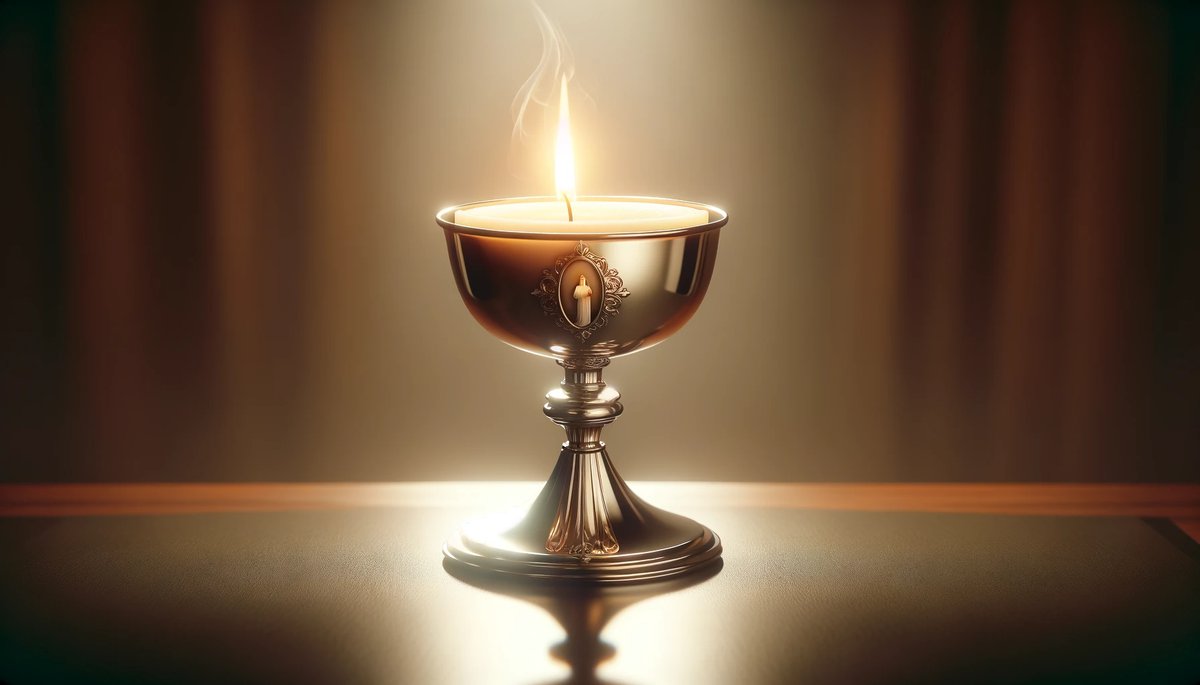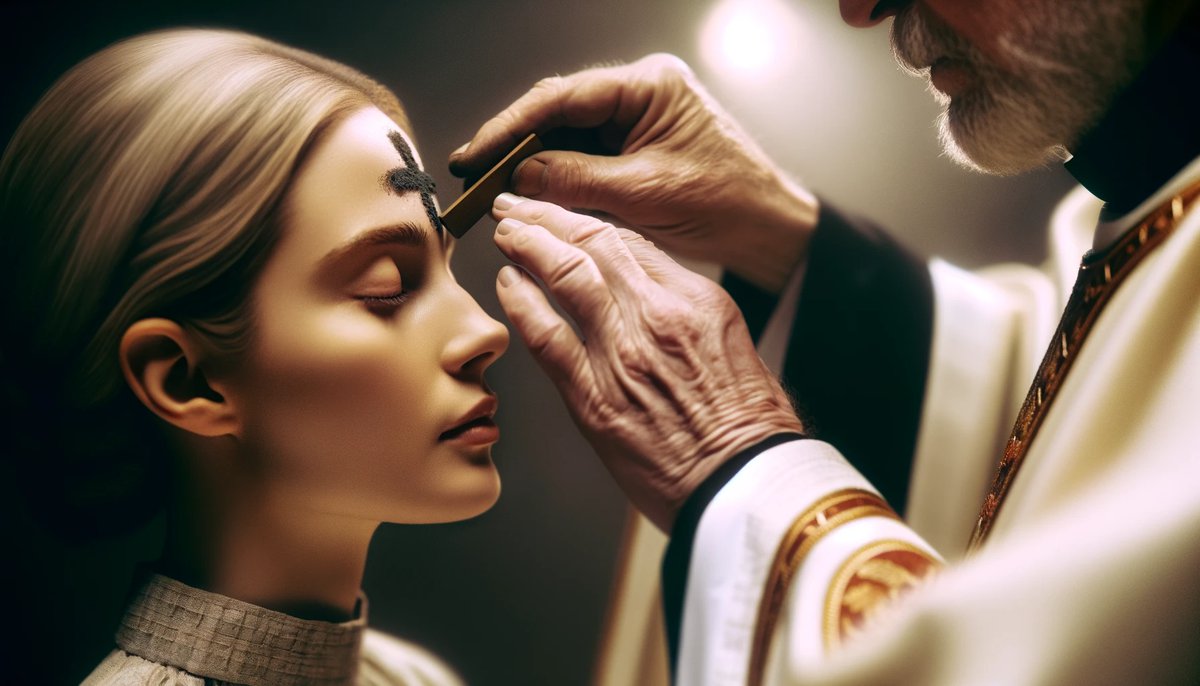Home>Theology and Spirituality>What Is The Significance Of A Communion Candle


Theology and Spirituality
What Is The Significance Of A Communion Candle
Published: February 24, 2024
Jason DeRose, Managing Editor at Christian.net, uses his expertise in religion and journalism to deepen understanding of faith's societal impacts. His editorial leadership, coupled with a strong academic background, enriches the platform’s diverse content, earning him recognition in both journalism and religious circles.
Discover the significance of a communion candle in theology and spirituality. Learn about its symbolic meaning and importance in religious ceremonies.
(Many of the links in this article redirect to a specific reviewed product. Your purchase of these products through affiliate links helps to generate commission for Christian.net, at no extra cost. Learn more)
Table of Contents
Introduction
The significance of a communion candle is deeply rooted in the spiritual and religious traditions of Christianity. Communion, also known as the Eucharist, is a sacred ritual in which Christians partake in the body and blood of Jesus Christ, symbolized by bread and wine. The use of a communion candle adds a profound layer of symbolism and reverence to this sacred act.
Communion candles have been an integral part of Christian liturgical practices for centuries, serving as a visual representation of the divine presence and illuminating the spiritual journey of the faithful. Understanding the history, symbolism, and role of communion candles in the Catholic Church and other Christian traditions provides a profound insight into the spiritual significance of these sacred symbols.
In the following sections, we will delve into the rich history of communion candles, explore their symbolism, and examine their role in the Catholic Church and other Christian denominations. By gaining a deeper understanding of communion candles, we can appreciate their profound significance in the spiritual lives of believers and the rich tapestry of Christian traditions.
Read more: What Is The Significance Of First Communion
The History of Communion Candles
The history of communion candles can be traced back to the early centuries of Christianity. Candles have held symbolic significance in religious rituals and ceremonies across various cultures and faith traditions. In the Christian context, the use of candles during the Eucharist can be linked to the practices of the early Church.
During the first few centuries of Christianity, the celebration of the Eucharist often took place in the catacombs, underground burial sites where early Christians gathered to worship in secret due to persecution. In these dimly lit spaces, candles served a practical purpose, providing illumination for the sacred rites and symbolizing the presence of Christ, who is often referred to as the "Light of the World."
As the Christian Church emerged from the shadows of persecution and established itself as a recognized faith, the use of candles in liturgical settings became more formalized. The practice of using candles during the Eucharist evolved, with specific candles designated for different parts of the ritual.
Over time, the symbolism of the communion candle deepened, representing Christ as the light that dispels darkness and illuminates the path of believers. The act of lighting the communion candle became a ritual in itself, signifying the spiritual awakening and the presence of Christ among the faithful.
In the medieval period, elaborate candlesticks and candelabras adorned church altars, emphasizing the importance of candles in religious ceremonies. The use of beeswax candles, known for their purity and brightness, became customary, further enhancing the spiritual symbolism associated with communion candles.
The significance of communion candles continued to evolve through the Renaissance and into the modern era. While the practical need for illumination has diminished with advancements in lighting technology, the spiritual symbolism of communion candles remains deeply ingrained in Christian liturgical practices.
Today, communion candles continue to hold a central place in the celebration of the Eucharist, serving as a timeless link to the early Christian traditions and embodying the enduring light of Christ in the hearts of believers.
The history of communion candles is a testament to the enduring power of symbolism and ritual in the Christian faith, connecting contemporary worshippers to the rich tapestry of tradition and spirituality that spans centuries.
The Symbolism of Communion Candles
The symbolism of communion candles encompasses a profound spiritual significance that resonates deeply within the Christian tradition. At its core, the communion candle represents the presence of Christ, the Light of the World, illuminating the hearts and minds of believers as they partake in the sacred Eucharist.
The flame of the communion candle symbolizes the divine presence of Christ, whose light dispels darkness and brings forth spiritual illumination. As the candle is lit during the Eucharistic celebration, it serves as a visual reminder of Christ's enduring presence among the faithful, guiding them on their spiritual journey and offering hope in times of darkness.
Furthermore, the act of lighting the communion candle signifies the awakening of faith and the kindling of spiritual fervor within the worshipper. It serves as a symbolic gesture of offering one's intentions, prayers, and devotion to God, seeking the transformative power of Christ's light to illuminate their lives.
The use of beeswax, known for its purity and brightness, in communion candles further enhances their symbolism. The purity of the beeswax represents the sinless nature of Christ, while its radiant glow reflects the divine light that shines forth from the Savior. This symbolism underscores the sacredness of the Eucharist and the profound spiritual transformation that takes place as believers partake in the body and blood of Christ.
In addition, the communion candle symbolizes unity within the Christian community. As individual candles are lit from the Paschal candle, which represents the resurrection of Christ, it signifies the sharing of Christ's light and the communal bond among believers as they partake in the Eucharist together. This symbolism reinforces the interconnectedness of the faithful in their shared journey of faith and devotion to Christ.
The multi-faceted symbolism of the communion candle serves as a poignant reminder of the spiritual truths embodied in the Eucharist. It encapsulates the themes of divine presence, spiritual awakening, purity, illumination, and communal unity, weaving together a tapestry of profound meaning that enriches the spiritual experience of the faithful.
Ultimately, the symbolism of the communion candle transcends its physical form, inviting worshippers to contemplate the profound mysteries of faith and the transformative power of Christ's light in their lives. It stands as a timeless symbol of spiritual illumination and divine presence, inviting believers to embrace the sacredness of the Eucharist and the enduring light of Christ that shines brightly through the ages.
The Role of Communion Candles in the Catholic Church
In the Catholic Church, communion candles play a central role in the celebration of the Eucharist, serving as powerful symbols of Christ's presence and the spiritual journey of the faithful. The use of communion candles is deeply rooted in the liturgical traditions of the Church, carrying profound significance in the sacred rituals and worship practices.
During the celebration of the Eucharist, the communion candles are prominently displayed on or near the altar, flanking the tabernacle where the consecrated Eucharist is reserved. Their placement holds symbolic importance, signifying the divine presence of Christ and the sanctity of the Eucharistic celebration. As the faithful gather to partake in the body and blood of Christ, the communion candles stand as beacons of spiritual illumination, drawing attention to the sacred mystery unfolding during the liturgy.
The lighting of the communion candles is a ceremonial act that holds deep spiritual significance. Before the Eucharistic celebration begins, the candles are typically lit, symbolizing the presence of Christ, the Light of the World, among the worshippers. The flickering flames serve as a visual representation of the divine radiance that permeates the sacred space, inviting the faithful to enter into a deeper communion with Christ and one another.
Furthermore, the communion candles are often used during processions within the liturgy, such as the entrance procession and the recessional at the end of the Eucharistic celebration. As the procession moves through the church, the candles lead the way, symbolizing Christ as the guiding light for the faithful on their spiritual journey. This symbolic role underscores the centrality of Christ in the lives of believers and the transformative power of His light in illuminating their path of faith.
In addition to their symbolic role during the Eucharistic celebration, communion candles are also utilized in other liturgical rites and sacraments within the Catholic Church. They are often present during the sacraments of baptism and confirmation, signifying the presence of Christ as the source of new life and spiritual empowerment for the recipients of these sacraments.
The role of communion candles in the Catholic Church extends beyond their visual symbolism; they serve as tangible reminders of Christ's abiding presence and the spiritual truths embodied in the Eucharist and other sacramental rites. Through their prominent placement, ceremonial lighting, and symbolic use in processions, communion candles enrich the worship experience, deepening the spiritual connection between the faithful and the divine mysteries of the Catholic faith.
The profound role of communion candles in the Catholic Church underscores their enduring significance as sacred symbols that illuminate the spiritual journey of believers and bear witness to the timeless truths of the Christian faith.
How Communion Candles are Used in Other Christian Traditions
In addition to their prominent role in the Catholic Church, communion candles hold significant symbolism and usage in various other Christian traditions. The use of communion candles transcends denominational boundaries, enriching the spiritual practices and liturgical expressions of diverse Christian communities.
In Eastern Orthodox Christian traditions, the use of candles holds deep spiritual significance. During the celebration of the Divine Liturgy, multiple candles are typically lit and placed on or near the altar, symbolizing the radiant presence of Christ and the light of the Holy Spirit. The flickering flames of the communion candles create an atmosphere of reverence and spiritual illumination, inviting worshippers to enter into the sacred mystery of the Eucharist. The use of candles in Eastern Orthodox traditions underscores the universal symbolism of Christ as the Light of the World, illuminating the hearts and minds of believers across different Christian expressions.
Within Anglican and Episcopal traditions, communion candles are often utilized in the celebration of the Eucharist, enhancing the visual and symbolic elements of the liturgy. The candles are typically placed on the altar, flanking the central cross, and are ceremonially lit before the Eucharistic celebration begins. Their presence serves as a visual reminder of Christ's enduring light and the sanctity of the sacramental gathering. The use of communion candles in Anglican and Episcopal traditions reflects a deep reverence for the Eucharist and the spiritual symbolism embodied in the act of partaking in the body and blood of Christ.
In Lutheran worship, communion candles are employed as part of the liturgical setting during the celebration of the Eucharist. The candles are often placed on or near the altar, serving as focal points of spiritual illumination and divine presence. The act of lighting the communion candles before the Eucharistic celebration symbolizes the spiritual awakening and the presence of Christ among the worshippers. The use of communion candles in Lutheran traditions underscores the centrality of Christ in the Eucharistic gathering and the enduring significance of His light in the lives of believers.
Across various Christian traditions, the usage of communion candles reflects a shared reverence for the Eucharist and the spiritual symbolism associated with Christ's presence. Whether in Eastern Orthodox, Anglican, Episcopal, Lutheran, or other Christian denominations, communion candles serve as timeless symbols of spiritual illumination and divine radiance, enriching the worship experience and deepening the spiritual connection between believers and the sacred mysteries of the Christian faith.
Read more: What Is The Significance Of Lent?
Conclusion
In conclusion, the significance of communion candles in the Christian faith is profound and multifaceted. From their rich historical roots to their deep symbolism and their central role in liturgical practices, communion candles embody the enduring light of Christ and the spiritual journey of believers. The history of communion candles traces back to the early centuries of Christianity, where they served as both practical sources of illumination and powerful symbols of Christ's presence in the Eucharistic celebration. Over time, the symbolism of the communion candle has evolved to represent spiritual awakening, divine illumination, purity, and communal unity within the Christian community.
The role of communion candles in the Catholic Church and other Christian traditions is marked by their prominent placement, ceremonial lighting, and symbolic use in liturgical processions. These candles serve as tangible reminders of Christ's abiding presence and the spiritual truths embodied in the Eucharist and other sacramental rites. They create an atmosphere of reverence and spiritual illumination, inviting worshippers to enter into the sacred mystery of the Eucharist and partake in the transformative power of Christ's light.
Furthermore, the usage of communion candles extends beyond denominational boundaries, enriching the spiritual practices and liturgical expressions of diverse Christian communities. Whether in Eastern Orthodox, Anglican, Episcopal, Lutheran, or other Christian denominations, communion candles serve as timeless symbols of spiritual illumination and divine radiance, deepening the spiritual connection between believers and the sacred mysteries of the Christian faith.
In essence, the communion candle stands as a timeless symbol of spiritual illumination and divine presence, inviting believers to embrace the sacredness of the Eucharist and the enduring light of Christ that shines brightly through the ages. Its significance transcends its physical form, inviting worshippers to contemplate the profound mysteries of faith and the transformative power of Christ's light in their lives. As believers partake in the Eucharist and behold the flickering flame of the communion candle, they are reminded of Christ's enduring presence, guiding them on their spiritual journey and offering hope in times of darkness.














